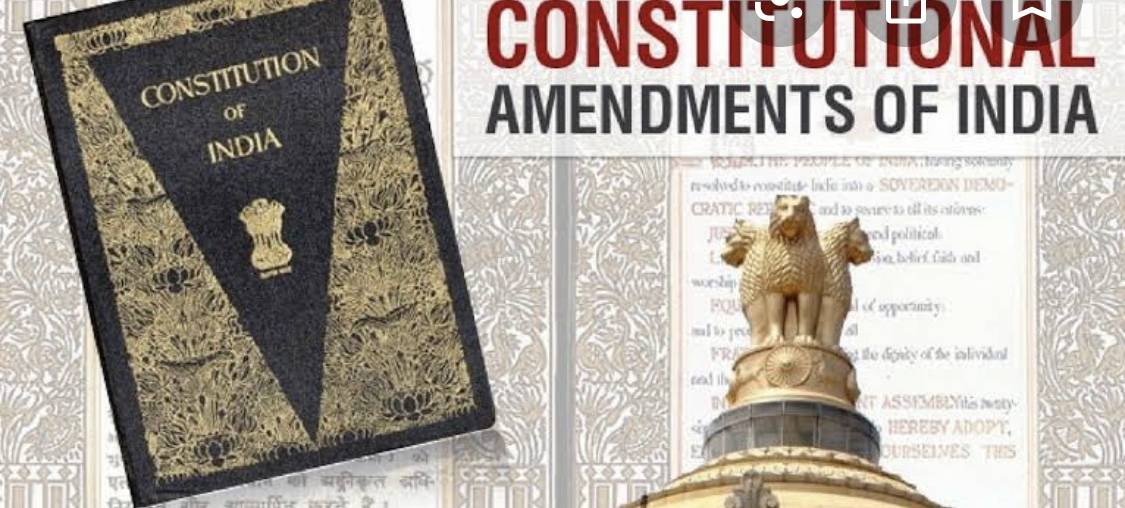Table of Contents
Introduction
Change is the law of life. Therefore, any law, howsoever sacred it’s going to be, ought to adopt the ever-changing wants of nation and its individuals . Pandit Jawaharlal Nehru justly ascertained that ” the Constitution mustn’t be thus rigid that it can not be adapted to the ever-changing wants of national development and strength.” Dr. Ambedkar explaining the projected for change in Constituent Assembly same,
Those who at disgruntled with the constitution have solely to get two-third majority to amend it……
Power and Procedure for Amendent – Art. 368
Any change of the Constitution could also be initiated solely with introduction of a Bill for the aim in either House of Parliament . and once the Bill is gone along every House Majority of total membership of each home and by a majority of not but two- third of the members of each homes gift and pick , it shall be bestowed to the President and on receiving his assent , the Constitution shall stand amended in accordance with terms of the Bill.
However if change seeks to form any amendment in following Provisions specifically, Election of President (Art. fifty four and fifty five ) , government Power of Union and States (Art. seventy three and 162 ) The Supreme Court and high courts . Distribution of Legislative Powers between the Union and therefore the States , illustration of States in parliament and Provisions of Art. 368 itself.
the projected change shall additionally need to be legal by the general assembly of not but one- half States . Art. 368(2)
Features of Amending method
* The Procedure could be a blonde of stiffly and adaptability.
* Subject to special Procedure ordered down in Art. sixty eight all Constitutional Provisions also can be amended by Parliament.
* The State Legislatures cannot initiate the Bill for change of the Constitution.
* There is no Provision for joint sitting of each home of Parliament for Passing Constitutional change.
* No Previous sanction of President is needed for introducing Bill for change.
* President is sure to offer assent to the Bill punctually gone along each homes.( See Constitution twenty fourth change Act, 1971 Art. 368 (2).
* Nothing in Article thirteen Shall apply to any change created below article 368 ( constitution twenty fourth change. ) Art. 368 (3). This Provision was value-added to nullify the ruling of Golaknath v. State of Punjab (1967).
Important cases-
– Golaknath v. State of Punjab (1967).
RIGHT TO PROPERTY- IS IT A elementary RIGHT?
● Supreme Court dominated that Parliament doesn’t have the facility to limit any of the elemental Rights enshrined within the Constitution.
● Hence, State of Punjab couldn’t deduct Golaknath or the other citizen’s land as Right to Property was deemed to be elementary.
● starting with its ruling in GOLAKNATH, the Court developed jurisprudence around what was referred to as the fundamental structure philosophy.
● consistent with this philosophy, the Court was guilty of preventing the erosion of these enduring values that represent the essence of constitutionalism.
Basic Structure not amendable – (Kesavananda bharti case ):
The phrase ‘basic structure’ was introduced for the primary time by M.K. Nambiar and alternative counsels whereas affirming the petitioners within the Golaknath case, however it had been solely in 1973 that the thought surfaced within the text of the apex court’s finding.
In historic Judgment delivered by thirteen Judges Bench (largest ever Bench) of supreme court the philosophy of Basic Structure was propounded as limitation on the facility of change. The supreme court known the essential options of basic structure like, rule of law, domination of constitution, review , Independence of Judiciary , free and truthful elections , essence of elementary right, access to justice, federalism, school of thought and a few a lot of and declared that any change casting off these options are offending of Basic Structure and can be affected down. the fundamental structure philosophy is creation of the Supreme Court of India and there’s no parallel within the Constitution of alternative democratic countries. together with USA. in sequent cases specifically, Minerva Mills, (1980), I.R.Coelho , (2007) and NJAC case (2015) the Supreme Court has any fortified this idea.
– Minerva Mill vs Union of
India – 1980
Basic Structure of the Constitution
The validity of forty second change Act was challenged on
the bottom that they’re damaging of the ‘basic
structure’ of the Constitution
● SC same that a restricted amending power itself could be a basic
feature of the Constitution.
● SC dominated that elementary Rights and therefore the Directive
Principles ar needed to be viewed because the 2 sides of
identical coin. each ought to be complementary to every
alternative and there ought to be no confrontation between them.
Reference- lawprenurz.com
Author: Mahima,
1st year student of LAW FACULTY, DELHI UNIVERSITY


Great!